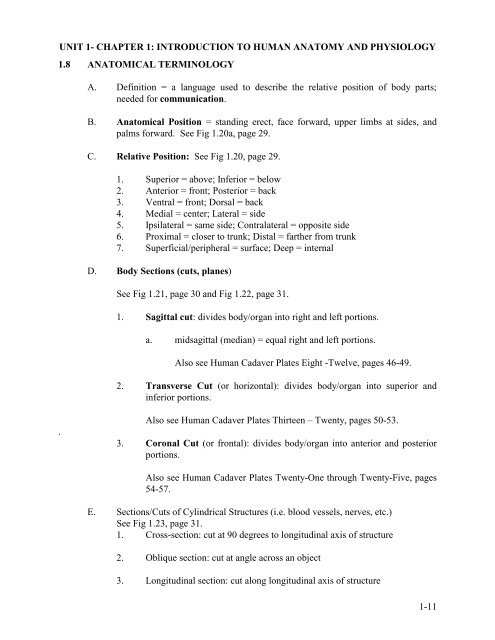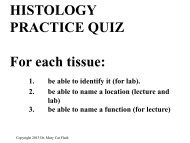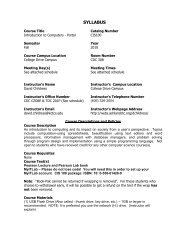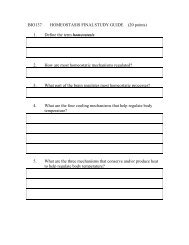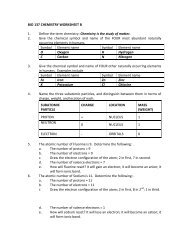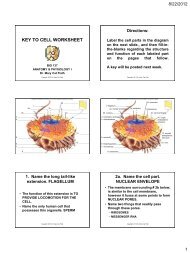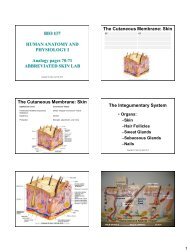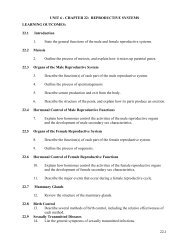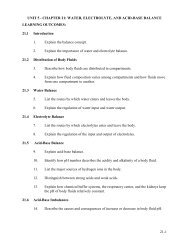CHAPTER 1: INTRODUCTION TO HUMAN ANATOMY ...
CHAPTER 1: INTRODUCTION TO HUMAN ANATOMY ...
CHAPTER 1: INTRODUCTION TO HUMAN ANATOMY ...
You also want an ePaper? Increase the reach of your titles
YUMPU automatically turns print PDFs into web optimized ePapers that Google loves.
UNIT 1- <strong>CHAPTER</strong> 1: <strong>INTRODUCTION</strong> <strong>TO</strong> <strong>HUMAN</strong> ANA<strong>TO</strong>MY AND PHYSIOLOGY1.8 ANA<strong>TO</strong>MICAL TERMINOLOGYA. Definition = a language used to describe the relative position of body parts;needed for communication.B. Anatomical Position = standing erect, face forward, upper limbs at sides, andpalms forward. See Fig 1.20a, page 29.C. Relative Position: See Fig 1.20, page 29.1. Superior = above; Inferior = below2. Anterior = front; Posterior = back3. Ventral = front; Dorsal = back4. Medial = center; Lateral = side5. Ipsilateral = same side; Contralateral = opposite side6. Proximal = closer to trunk; Distal = farther from trunk7. Superficial/peripheral = surface; Deep = internalD. Body Sections (cuts, planes)See Fig 1.21, page 30 and Fig 1.22, page 31.1. Sagittal cut: divides body/organ into right and left portions.a. midsagittal (median) = equal right and left portions.Also see Human Cadaver Plates Eight -Twelve, pages 46-49.2. Transverse Cut (or horizontal): divides body/organ into superior andinferior portions..Also see Human Cadaver Plates Thirteen – Twenty, pages 50-53.3. Coronal Cut (or frontal): divides body/organ into anterior and posteriorportions.Also see Human Cadaver Plates Twenty-One through Twenty-Five, pages54-57.E. Sections/Cuts of Cylindrical Structures (i.e. blood vessels, nerves, etc.)See Fig 1.23, page 31.1. Cross-section: cut at 90 degrees to longitudinal axis of structure2. Oblique section: cut at angle across an object3. Longitudinal section: cut along longitudinal axis of structure1-11


